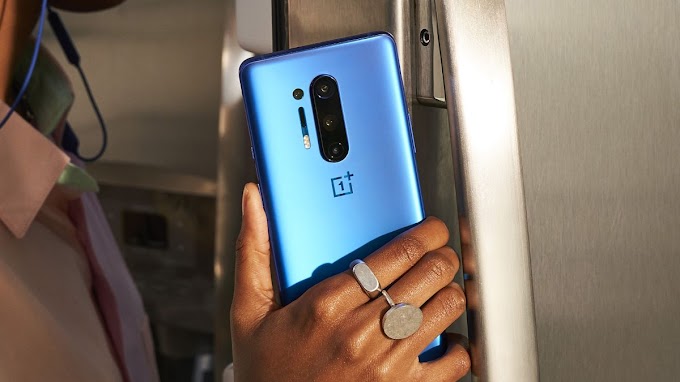Two phones have been
dominating discussions over the past few months - the OnePlus Nord and the
Google Pixel 4a.
Both of these phones
launch into a highly competitive mid-range. While they have many differences,
they both want to bring you flagship features at affordable prices.
Price and availability
Nord: £379/£469,
available from 4 August
Pixel 4a: £349,
available from 1 October
The OnePlus Nord was
announced on 21 July 2020 with a price of £379 for the 8/128GB version and £469
for the 12/256GB version. Availability will be from 4 August, with some
pre-order events already taking place.
The Google Pixel 4a was
announced on 3 August, with a price of £349, so it's a little cheaper and
there's only one version - 6/128GB. Pre-orders don't open until 10 September,
but availability isn't until 1 October - so there's quite a delay before you
can actually get this phone.
Design
Nord: 158.3 x 73.3 x
8.2mm, 184g
Pixel 4a: 144 x 69.4 x
8.2mm, 143g
The OnePlus Nord
has a quality design, finished with Corning Gorilla Glass 5. It's
available in two colours - Blue Marble and Gray Onyx. The cameras offset to the
left in a vertical line and there's punch hole front cameras.
The Pixel 4a has a
polycarbonate unibody, with a raised camera square in the top left corner of
the rear, reflecting the design of the Pixel 4. It's only available in Just
Black, and has a single punch hole front camera.
The Pixel 4a offers a
3.5mm headphone socket and has great stereo speakers, while the OnePlus Nord
only has a mono speaker. There's a rear fingerprint scanner on the Pixel 4a,
while the Nord gets an in-display scanner for unlocking.
The OnePlus Nord
definitely looks like the more premium handset although both feel premium
enough. Naturally, the Nord is the bigger and heavier handset, because it has a
larger display.
Display
Nord: 6.44in AMOLED,
2400 x 1080 pixels (408ppi), 90Hz
Pixel 4a: 5.81in AMOLED,
2340 x 1080 pixels (452ppi), 60Hz
The OnePlus Nord comes
with a 6.44-inch AMOLED display - and it has a 90Hz refresh rate. It's a 1080p
display, with a 20:9 aspect ratio and a pixel density of 401ppi. It's a great
display, but the dual front cameras means there's a bigger gap in the top left-hand
corner.
The Pixel also has an
OLED display, it's also 1080p although it has a higher pixel density because
it's slightly smaller at 5.81-inch. In truth, both displays are very good, but
the Nord offers a 90Hz refresh rate, while the Pixel 4a is 60Hz. For some that
might be an important factor, but having used both phones, there's very little
real difference in the visual performance.
Size is the big
difference here - the Nord gives you more space to play, so it's better for
gaming and for media consumption, while the Pixel 4a is pretty compact by
modern standards.
Hardware and specs
Nord: Qualcomm
Snapdragon 765G, 8/12GB RAM, 128/256GB storage, 4115mAh battery
Pixel 4a: Qualcomm
Snapdragon 730G, 6GB RAM, 128GB storage, 3140mAh battery
The OnePlus Nord rusn on
the Qualcomm Snapdragon 765G and that means it's going to be 5G enabled. It
will come with 8GB RAM as standard paired with 128GB storage, with a step-up to
12/256GB.
The battery is
reasonable at 4115mAh and it will also offer Warp Charge 30 for fast charging -
which is really handy for fast top-ups.
The Pixel 4a sits on the
Snapdragon 730G platform. This is the same series as the Nord, but slightly
older hardware. Firstly, it's 4G only, so you don't get that next-gen
conncectivity.
Secondly, it's an 8nm
SoC whereas the 765G is 7nm, although both are octo-core. The 765G uses newer
processors and has a slightly newer GPU, so is going to be a touch more
powerful with slightly more graphics processing power. Having used both phones,
there's not a huge difference in the experience performance-wise, once you take
out 5G connectivity. The Nord is slightly faster, but it's so slight, you'll
probably not notice any difference in day-to-day use.
The Nord has a 4115mAh
battery with that fast charging, while the Pixel 4a sits at 3120mAh with
slightly slower charging. Although the Pixel 4a is pushing a slightly smaller
display, the battery performance of the Nord seems to be better overall.
Cameras
Nord: 48MP f/1.75 main,
8MP f/2.25 ultra-wide, 2MP f/2.4 macro, 5MP depth; dual selfie cameras, 32MP
wide, 8MP ultra-wide
Pixel 4a: 12.2MP f/1.7
main; 8MP selfie
There's an obvious
difference between these two devices on the hardware front, but before we go
racing off declaring the OnePlus Nord the better camera load-out, let's look at
the details.
The Nord gets a
48-megapixel main camera sensor. Bare in mind, that this uses pixel combining
to get back to 12-megapixel images, so it's not the immediate winner one might
consider it to be. You can crop in closer, but generally speaking, that's no
better than digital zoom on the Pixel.
Both these cameras
perform well, but we think the Pixel 4a produces the more natural images. It's
certianly better at preserving natural colours when applying the HDR treatment
and it's better in low light performance too. The advantage that the Nord has is
the ultra-wide camera, which the Pixel 4a lacks, meaning you have easy creative
opportunities with the Nord.
When it comes to the
front camera, the Pixel is substantially better in low light than the Nord, but
produces lighter selfies in normal conditions, whereas the Pixel can be a
little contrasty. That's a case of personal taste. The ultra-wide selfie camera
on the Nord gives you a view that the Pixel can't match, but the results are
low quality.
The Nord's macro camera
isn't worth bothering with: both the Nord and the Pixel produce better results
from digital zoom if you want to get close to the the subject.
Overall, the Nord packs
in more cameras, but the real difference is the ultra-wide - otherwise, the
Pixel offers a simpler solution that often gives better quality results.
Software
Nord: Android 10 with
Oxygen OS
Pixel 4a: Android 10
with Pixel extras
When it comes to
software, both of these devices are in a really strong place. Both run Android
10 and neither messes around with it too much.
The Pixel - as a Google
phone - will be the cleaner of the two, getting access to some of Google's
Pixel features that don't always appear on other devices. It will also be at
the front of the upgrade queue, so you can expect it to have Android 11 as soon
as it launches.
OnePlus' Oxygen OS is
popular, however, as it's a fairly clean take on Android - as well as having a
good reputation for keeping things clean and fast. OnePlus is also fast with
updates, but obviously, not as fast as Google. OnePlus is good with
optimisation and that can keep its phones feeling fast, while also offering
more customisation options.
We check 1,000s of
prices on 1,000s of retailers to get you the lowest new price we can find.
Pocket-lint may get a commission from these offers. Read more here.
Summing up
These phones are similar
in many ways, with the Nord offering great value for money considering you get
a larger display, more powerful hardware and 5G in a design that's a little
more premium. It's hard not to pick the OnePlus Nord, because it offers a great
experience and that screen size will be popular.
The Pixel 4a offers a
great camera experience, however, and while it doesn't offer as many cameras,
often the performance is better. It's slightly less powerful and there's no 5G
- but it's not hugely different in the over experience when it comes to running
the latest apps and games.
Ultimately, however, we
feel this comes down to size. The Pixel 4a is only going to appeal to those
wanting a more compact handset. With no Pixel 4a XL, you need to be happy with
that smaller display first and foremost. Otherwise, despite OnePlus looking
like it offers better value on the spec sheet, choosing between these phones is
actually more difficult than you might imagine.




0 Comments